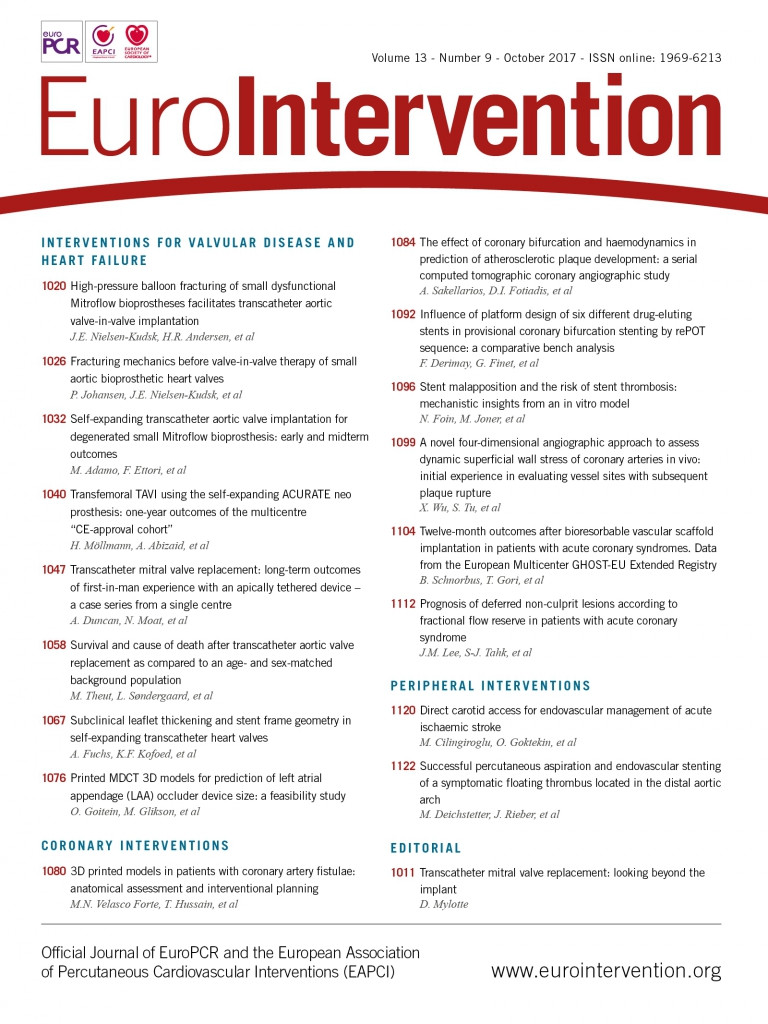
We read with great interest the article by Bertog et al1, presenting a randomised controlled comparative study of chemical and radiofrequency-based renal denervation (RDN) in a porcine model. This study showed that RDN performed by chemical renal denervation with the use of percutaneous perivascular alcohol infusion is more effective compared to RDN performed by radiofrequency ablation using the Symplicity Flex™ system (Medtronic, Dublin, Ireland).
Chemical RDN remains a focus of interest as a treatment option for patients with resistant hypertension, especially since the discouraging results of the SYMPLICITY HTN-3 trial2. Further limitations of RDN by radiofrequency ablation include the possible side effects of the procedure3, the regenerative properties of the afferent sensory fibres of the renal artery4, and the possibility of causing renal artery stenosis5.
Chemical RDN was first introduced in our Department with the use of vincristine, an antineoplastic agent with neurotoxic effects caused by giant axonal swellings and secondary demyelination of the renal sympathetic system. Chemical denervation with vincristine has been tested both in experimental settings6-8, and in human9 with excellent results. Its local delivery to the renal sympathetic system in an experimental model resulted in a significant reduction in the number of renal nerves7, whereas delivery via a constant flow rate catheter was more effective compared to the denervation performed by a catheter that delivers vincristine in a random fashion10. Although not enough data exist on the potential systemic effects of vincristine after its local delivery, the very low dose of infusion eliminates the possibility of occurrence of such systemic side effects. However, further investigation is needed.
The recently published experimental results with the use of RDN with perivascular alcohol infusion strengthen the beneficial role of chemical RDN in patients with resistant hypertension and further support the need for performing large-scale studies in order to establish the long-term safety and efficacy of this technique.
Conflict of interest statement
The authors have no conflicts of interest to declare.

